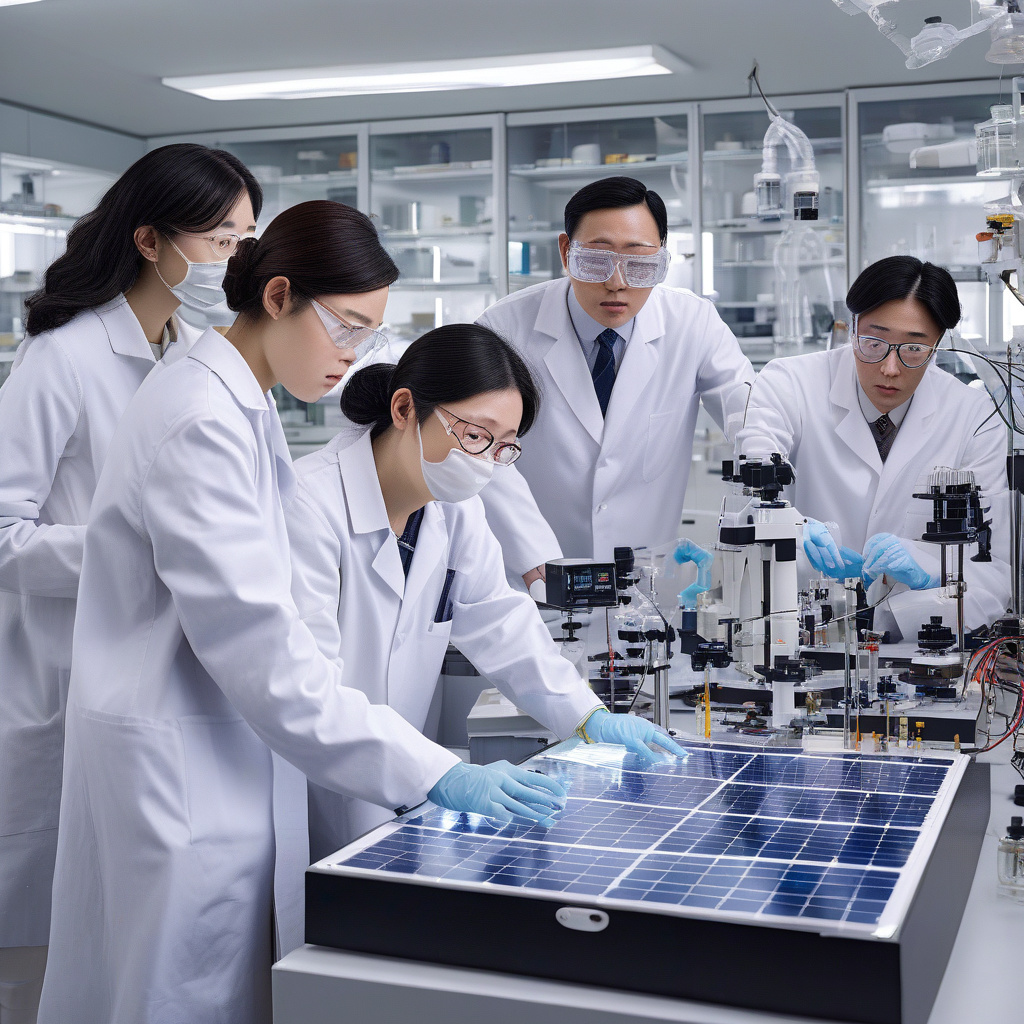Korean Scientists Reach Remarkable 23.64% Efficiency with Lift-Off Perovskite Tandem Solar Cell
Scientists from Korea Institute of Energy Research (KIER) have announced that their new tandem solar cell has achieved a groundbreaking efficiency of 23.64%. This remarkable feat marks a significant advancement in solar cell technology, bringing us one step closer to harnessing cleaner and more sustainable energy sources.
The tandem solar cell developed by the Korean scientists combines two types of materials: silicon and perovskite. Silicon is a well-established material in the solar industry known for its stability and efficiency, while perovskite is a newer material that has shown great promise due to its low cost and high absorption coefficient. By integrating these two materials into a tandem structure, the scientists were able to overcome the limitations of traditional single-junction solar cells and achieve a much higher efficiency.
One of the key innovations that enabled this breakthrough is the lift-off process used to transfer the perovskite layer onto the silicon substrate. This technique allows for better control over the deposition of the perovskite layer, leading to improved light absorption and reduced recombination losses. As a result, the tandem solar cell was able to achieve an efficiency of 23.64%, surpassing the previous record for perovskite-silicon tandem solar cells.
The implications of this achievement are significant for the solar industry and the transition to renewable energy. With solar energy becoming increasingly important in the fight against climate change, improving the efficiency of solar cells is crucial to making this technology more competitive with traditional fossil fuels. The success of the Korean scientists in boosting the efficiency of tandem solar cells brings us closer to realizing a future powered by clean and sustainable energy.
In addition to the environmental benefits, the development of high-efficiency tandem solar cells also holds economic potential. As the cost of solar energy continues to decline, thanks in part to advancements in technology like the lift-off perovskite tandem solar cell, solar power becomes a more attractive option for widespread adoption. This could lead to job creation, investment opportunities, and greater energy independence for countries around the world.
Moving forward, further research and development will be needed to scale up the production of tandem solar cells and improve their stability and reliability. Collaborations between scientists, industry partners, and policymakers will also play a crucial role in driving the commercialization of this technology and ensuring its widespread deployment.
The achievement of 23.64% efficiency with the lift-off perovskite tandem solar cell by Korean scientists is a testament to the power of innovation and collaboration in advancing renewable energy solutions. As we continue to push the boundaries of what is possible in solar technology, we move closer to a more sustainable future powered by clean and abundant solar energy.
solar, energy, efficiency, innovation, sustainability












